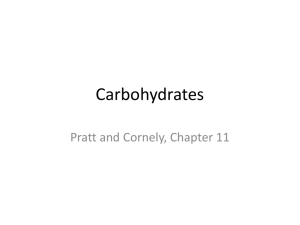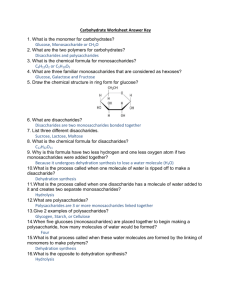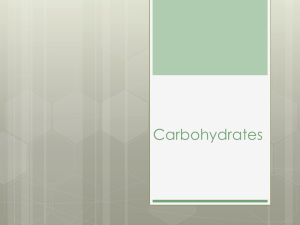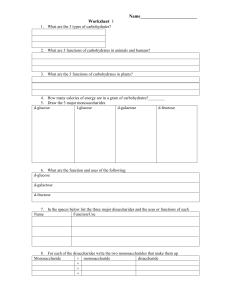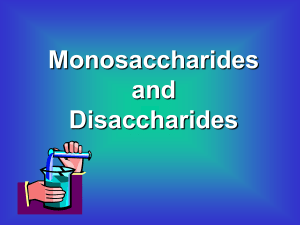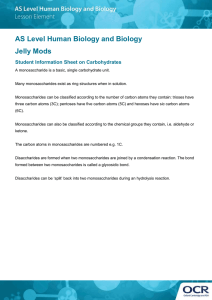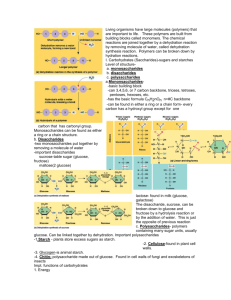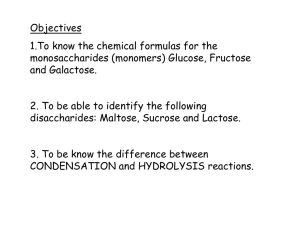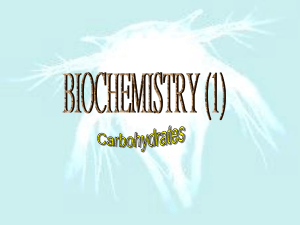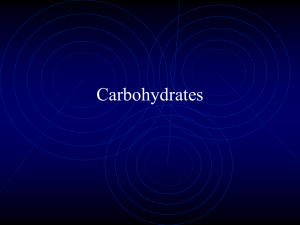Carbohydrates
advertisement
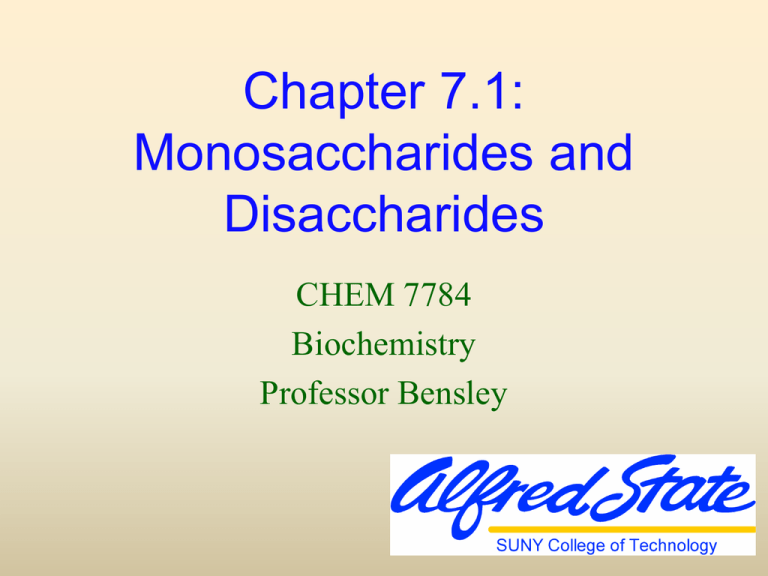
Chapter 7.1: Monosaccharides and Disaccharides CHEM 7784 Biochemistry Professor Bensley CHAPTER 7.1 Monosaccharides and Disaccharides Today’s Objectives: (To learn and understand the) – Structures and names of monosaccharides – Open-chain and ring forms of monosaccharides – Structures and properties of disaccharides Aldoses and Ketoses An aldose contains an aldehyde functional group A ketose contains a ketone functional group Enantiomers • D-glucose and L-glucose are ENANTIOMERS: nonsuperimposable COMPLETE mirror images (differ in configuration at EVERY CHIRAL CENTER). Diastereomers D-Threose D-Erythrose Epimers • Epimers are two sugars that differ only in the configuration around one carbon atom Structures to Know • • • • • Ribose is the standard five-carbon sugar Glucose is the standard six-carbon sugar Galactose is an epimer of glucose Mannose is an epimer of glucose Fructose is the ketose form of glucose D-Ribose D-Glucose D-Galactose D-Mannose D-Fructose Hemiacetals and Hemiketals Cyclization of Monosaccharides Pyranoses and Furanoses Chain-ring Equilibrium and Reducing Sugars Important Hexose Derivatives The Glycosidic Bond Nonreducing Disaccharides • Two sugar molecules can be also joined via a glycosidic bond between two anomeric carbons • The product has two acetal groups and no hemiacetals • There are no reducing ends, this is a nonreducing disaccharide • Examples: Sucrose and Trehalose (structures on next slide) Common Disaccharides
